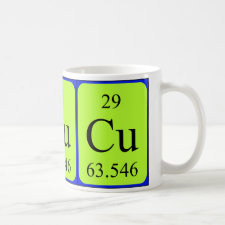
Authors: Jakubiak-Marcinkowska A, Legan M, Jezierska J
Article Title: Molecularly imprinted polymeric Cu(II) catalysts with modified active centres mimicking oxidation enzymes.
Publication date: 2013
Journal: Journal of Polymer Research
Volume: 20
Issue: (12)
Page numbers: ArticleNo317.
DOI: 10.1007/s10965-013-0317-z
Abstract: In this paper the preparation of surface molecularly imprinted Cu(II) catalysts with modified active centres is described. The resins were synthesized using suspension polymerization of 1-vinylimidazole, acrylonitrile, 1,1,1-tris(hydroxymethyl)propane trimethacrylate and 4-vinyloxybutylstearate in the presence of Cu(II) ions and 4-methoxybenzyl alcohol as the template. The resins obtained in the form of polymer beads posses diameters ranging from 30 μm to 300 μm and specific surface areas up to 315 m2/g depending on sonication mode. The resins, after copper removal, were modified in a two-step reaction: bromoalkylation with four alkyl bromides and subsequent exchange of bromide for tetrafluoroborate and trifluoroacetate anions. Non-modified and modified polymers bearing imidazole ligands inside the active centres were complexed with Cu(II) ions, leading to various copper content and applied as heterogeneous catalysts. The formed Cu(II) complexes were subsequently characterized by electron paramagnetic resonance (EPR) spectroscopy. A comparison of the EPR parameters, obtained by computer simulations of the experimental spectra of different Cu2+-catalysts allows to propose structures of the Cu(II) active centres as mostly N2O2 type (similar to the enzymatic ones). The catalytic activity of the Cu(II) loaded polymers without and with ionic liquids analogues inside active centres was tested using hydrogen peroxide in model oxidation reaction of hydroquinone. Protonation of imidazole nitrogen and introduction of additional free groups possessing strong electrostatic properties resulted in significant increase of catalytic activity in comparison to non-modified samples (oxidation degrees from 50 % to 90 %, selectivity up to 100 %). Trifluoroacetic anion has stronger effect than other studied anions
Template and target information: copper ion + 4-methoxybenzyl alcohol, 4-methoxybenzyl alcohol, Cu(II)
Author keywords: Molecularly imprinted polymers, Imprinted catalysts, Oxidation enzymes, Copper-oxidases, Ionic Liquids



Join the Society for Molecular Imprinting

New items RSS feed
Sign-up for e-mail updates:
Choose between receiving an occasional newsletter or more frequent e-mail alerts.
Click here to go to the sign-up page.
Is your name elemental or peptidic? Enter your name and find out by clicking either of the buttons below!
Other products you may like:
 MIPdatabase
MIPdatabase









